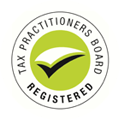Our Depreciation calculator lets you answer that burning question, ‘How much depreciation will I get?’
Our FREE on-line Depreciation Calculator goes through the same process as we do when clients phone for depreciation estimates.
It will take just a few minutes to enter the information the depreciation calculator asks you about your investment property. The more you know about the property, the more accurate the estimated depreciation will be.
Our Depreciation Calculator is the perfect tool to use when ‘crunching the numbers’ on potential purchases to see if they ‘stack up’ as investments.
After you’ve entered the information about your investment property just provide your phone number and we’ll text you the estimated depreciation for the first year.
If you enter your email address, you will receive the depreciation estimates for the first five years.
Please note that the Depreciation Calculator will not supply you with figures that you will be able to use on your tax return.
To get started just click on the FREE Calculator button below.
How we Calculate Depreciation
Many investors want to know how to calculate depreciation. How complicated can it be? The ATO generally only trusts Quantity Surveyors who are registered tax agents to calculate depreciation for investment properties.
Quantity Surveyors study Construction Management at University then need to understand the relevant tax legislation.
Here is a very simplified process for the steps we use to calculate Depreciation:
- Use the date the property was first available for lease and contract exchange date to determine which depreciation legislation to apply.
- Determine when the structure was built (including any common areas if applicable)
- Calculate construction costs (excluding assets) based on when it was built, quality of finish, and location, including common areas if applicable.
- If renovations have been done, repeat step 1 and 2 for the renovations
- Determine the date the investor can start claiming depreciation and apply pro-rata rates for 1st year. Depreciation for the building is generally 2.5% per year for 40 years from construction start date
- Determine which assets e.g. kitchen appliances, curtains and blinds, carpet etc. in the property can be depreciated and categorise them to determine their effective life.
- Determine individual installed costs for the assets at the time they were installed.
- Apply prime cost and diminishing value formula to each asset taking into account the effective life, installed cost, low value pooling, and when the investor is entitled to start claiming depreciation.
It’s important to note that in some cases assets cannot be depreciated, in other cases, a rental property may contain both assets that can be depreciated and others that can’t be depreciated.
The construction cost for the building also varies by location due to labour and material cost differences. The Quantity Surveyor will determine the year the building was constructed
The best way to calculate depreciation is to outsource it to the experts. Depreciator has been calculating the maximum depreciation claims for property investors since 2001. Some of that vast experience has been distilled into our online depreciation calculator.
Most online calculators ask two or three vague questions about your investment property, our calculator asks more information so we can more accurately calculate your depreciation estimate.
Sometimes a Human is the Best Depreciation Calculator
One thing the calculator can’t do is look at your property and make judgements about renovations by prior owners. If your investment property is over 10 years old it may have had work done. If you’re not certain if some work may have been done on your investment property, it’s best to call us or put through an online enquiry, details below.
If you have questions or if you’d like to speak to us about your property just click here and we’ll get back to you ASAP or call us on 1300 66 00 33
Rental Property Depreciation Rates
Property investors should be aware of the rental property depreciation rates that apply to their properties. The ATO decides how long something will last with fair use. They call this the Effective Life. The Effective Life then drives the % depreciation rate that can be used.
Residential buildings, if constructed after September 1987, have an Effective Life of 40 years. Buildings depreciate at 2.5% every year for 40 years – 2.5% x 40 years = 100%. This also applies to structural renovations carried out after September 1987 to buildings of any age.
So if you have a residential property that was built in 1990 and renovated in 2010, you depreciate the original building at 2.5% until 2030 and the renovation at 2.5% until 2040. If you have a 1960s property that was renovated in 2000, you depreciate the renovation only until 2040.
This deduction for buildings is called the Special Building Write-Off.
Rental Property Depreciation rates for assets are more complicated.
Assets (fixtures and fittings) are the items in a property that will wear out more quickly than the building. The ATO like to use the term “easily removable” as a general description of items that are classified as assets. In most cases, Depreciation can only be claimed on brand new assets. More on that below.
They have a shorter Effective Life and therefore a higher % depreciation rate than the building depreciation rate.
Carpet, for example, suffers a lot of wear and tear and has an Effective Life of 10 years. An oven has an Effective Life of 12 years. Artificial grass has an Effective Life of 5 years. There are hundreds and hundreds of Assets that can be found in residential rental properties, all with different depreciation rates.
Unfortunately, some people don’t realise the rental property depreciation rates for Assets differ from buildings. Uninformed property investors get less depreciation.
Assets can be depreciated using the Prime Cost method or the Diminishing Value method. It’s hard to explain the difference simply, but Prime Cost spreads the depreciation evenly, whereas with Diminishing Value there is more depreciation in the early years. Just about every investor uses the Diminishing Value method.
Depreciation Rates for Used Assets
To complicate things, the ATO introduced a new rule on 09/05/2017. From that date, any assets included with a property purchase must be brand new or no depreciation can be claimed. This also applies to brand new properties that were purchased earlier, but became an investment on or after 01/07/2017. I.e. you were living there and then started leasing it out.
In simple terms, if you now buy a used (more than 6 months old) residential property, you can depreciate the building at a rate of 2.5%, but not the assets. Those assets will typically be only a few % of the total available depreciation in the long term anyway.
You can always claim depreciation on assets in brand new properties. Depreciation is also available on any new assets you purchase, or if a renovation was done immediately prior to sale. i.e. those assets were brand new when it became an investment.
Depreciation Rates for Low Value assets
Trust the ATO to make things complicated. When assets fall below a certain value, you’re allowed to put them in a Low Value Pool. Once they’re in the low value pool the depreciation rate is high and the assets depreciate even more rapidly.
Do Renovations Affect Rental Property Depreciation Rates?
If you buy a property that has been renovated, or if you renovate a property, the depreciation rate for the structural work is 2.5% and the work starts depreciating from when it is completed. Assets that were installed brand new (unused) immediately before, or after a property becomes an investment can also be depreciated.
How to look up depreciation rates for rental properties.
If you’re super keen to know the depreciation rates for specific assets, the ATO produce a Rental Property Guide every year. There’s a link on this ATO page https://www.ato.gov.au/general/property/residential-rental-properties . It lists the depreciation rates for every asset imaginable. While it might be interesting to look up the depreciation rates, most property investors will leave the application of the depreciation rates to the experts – Quantity Surveyors.
Can you just use the Capital Works Depreciation Rate?
Some investors and the occasional accountant try to work out depreciation deductions without using a Quantity Surveyor. It’s a complicated business and they lack the tools and knowledge Quantity Surveyors use. They often simply bundle everything up and use the capital works depreciation rate of 2.5%.
Applying that capital works depreciation rate across the board creates a few problems. It means much lower depreciation deductions for many properties, which is great for the ATO, not so great for the investor. In some cases it means assets will depreciate for years after they should be worth nothing. More commonly, after the changes introduced in 2017 depreciation is being claimed on assets where it shouldn’t be.
Leave it to the experts; get a Depreciation Schedule from a specialist Quantity Surveying firm like Depreciator. Call 1300 66 00 33 now to enquire about your investment property













